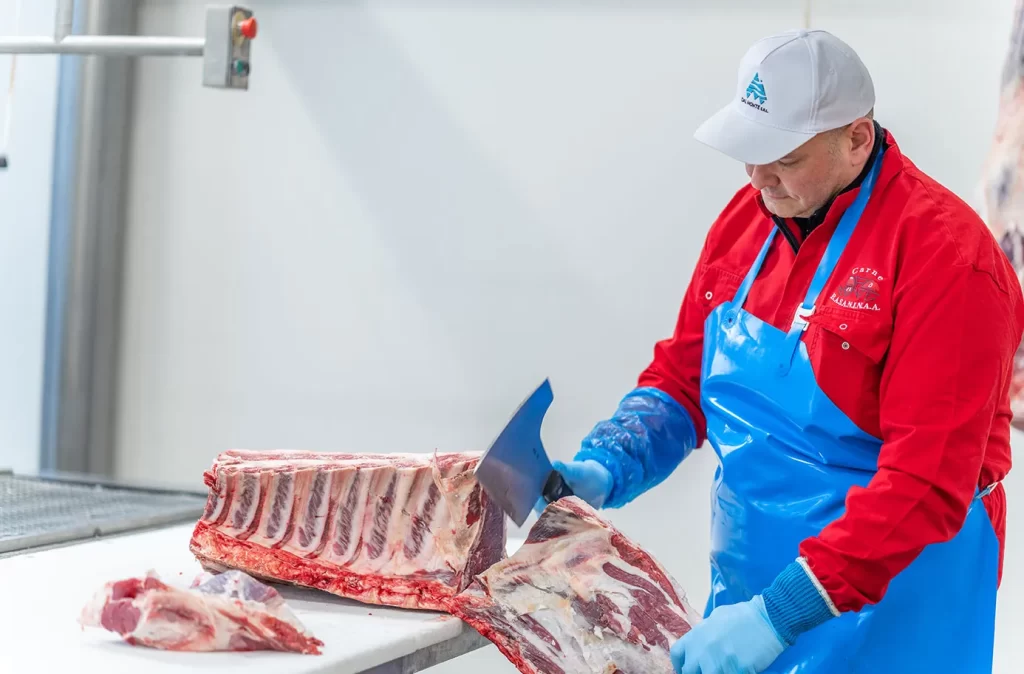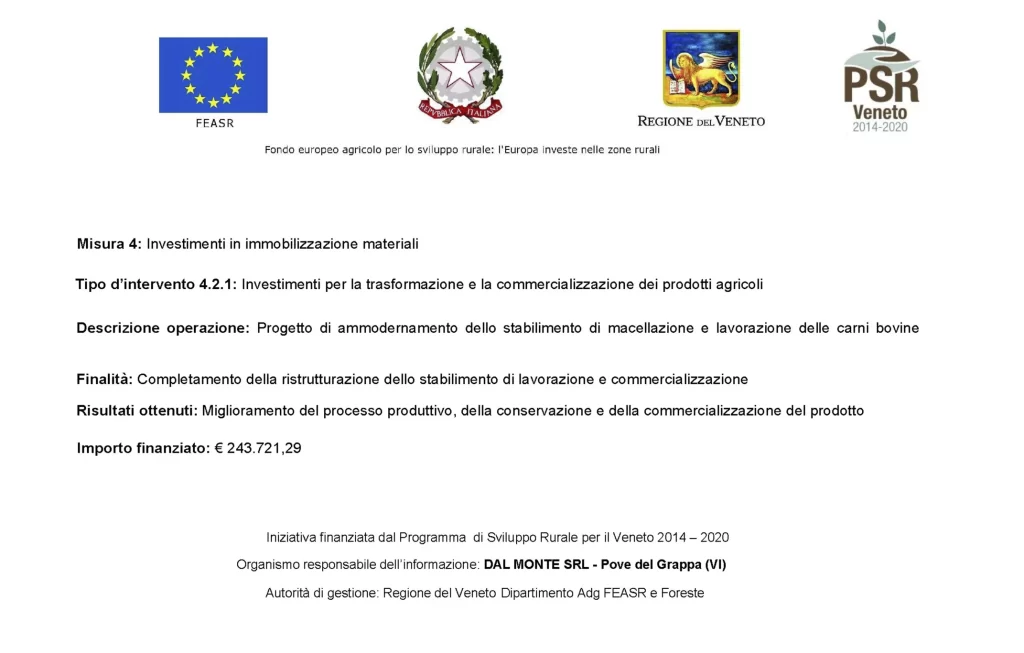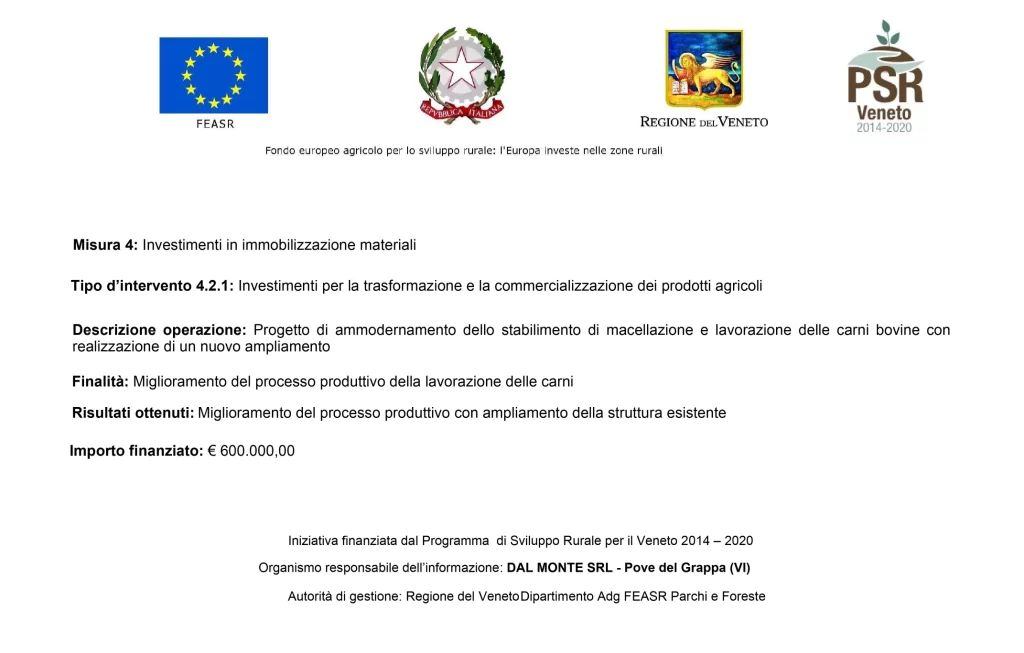sectioning
meat processing
Sectioning
At the heart of the food industry, there is a crucial process that ensures the quality, safety and freshness of the meat that reaches our tables: the meat handling process. In this journey through the key stages of this process, we will carefully explore how beef and offal, on the one hand, and those from outside suppliers, on the other, go through a series of critical steps to become high-quality, ready-to-eat products.
- Receipt of beef and offal from slaughterhouse
- Receiving bone-in meats from outside suppliers
- Receiving miscellaneous materials (packaging, etc.)
- Supply conformity control
- Miscellaneous materials storage
- Refrigerated meat/offal storage
- Spinal column removal
- Entry into laboratory Constitution batches
- Deboning and dissection
- Vacuum packaging
- Vacuum seal verification
- Weighing, labeling, packaging
- Possible Freezing
- Refrigerated finished product storage

1.
Receipt of beef and offal from slaughterhouse
Meat halves/quarts/fractures that come directly from slaughter have already been cooled. Checks on these products have already been carried out during the post-mortem health examination.
2.
Receiving bone-in meats from outside suppliers
Meats that are purchased from outside suppliers ( beef, pork, poultry, and rabbit) are unloaded via a special unloading arm if hung on a guidovia or in loose or vacuum crates
3.
Receiving miscellaneous materials (packaging, etc.)
Miscellaneous materials are defined as products intended to come in contact with meat (PE vacuum bags, etc.) and packaging, ( cartons, etc.).
4.
Supply conformity control
With regard to meat purchased from outside suppliers, before unloading, the hygienic conditions and temperature of the means of transport and the freshness of the meat, sanitary documentation, mandatory labeling of meat according to species, and correspondence with what is stated in the Transport Document are checked. In case of a favorable outcome of the checks, the meat is discharged.
5.
Miscellaneous materials storage
Packaging materials are stored in the specific warehouse in an orderly and dust-protected manner and divided by lots
6.
Refrigerated meat/offal storage
After weighing, meat and offal are stored at 0-4°C (+2°C for offal). Poultry meat is separated, pork is spaced from beef, and meat on guidovie is raised from walls and floor. Labels in accordance with Regulations (EC) 1760/2000 for beef and (EC) 1337/2013 for pork and poultry meat. Offal is stored separately.
7.
Spinal column removal
For cattle over 30 months old from countries with controlled or undetermined BSE risk, the vertebral column is removed and disposed of as a cat.1 by-product (SRM)
8.
Entry into laboratory Constitution batches
Bone-in and non-bone-in meat is transferred from the storage cells to the processing room, where the processing lot is formed by entering the mandatory traceability data or retrieving those in the computer system, with issuance of one or more bar-coded labels. Day-of-slaughter traceability is maintained for offal
9.
Deboning and dissection
The half-carcasses and offal are transferred to a laboratory at a temperature below +12°C, where they are boned and cut up by hand. Poultry and rabbit meat processing takes place in a separate room from beef and pork, with dedicated staff. The accumulation of unprocessed meat outside the refrigerated cells is avoided, while bones and fat are disposed of as Category 3 by-products.
10.
Vacuum packaging
The cuts are placed in a thick polyethylene bag and sent to the vacuum machine, which also performs heat sealing. The meat thus protected is fed into the shrink tunnel so that the film adheres well to the product.
11.
Verification of vacuum seal
The operator picks up all vacuum-packed pieces and visually and touch-checks their vacuum seal, verifying the perfect adhesion of the pouches to the packaged meat. In case of non-compliance, the piece of meat is re-packaged. If the noncompliance is repeated, the operator notifies the self-control officer and keeps the unfit meat separate.
12.
Weighing, labeling, packaging
Packaged cuts are weighed and labeled based on traceability data in the computer system. The labeled meat is placed in cartons for later storage and transportation.
13.
Possible freezing of the product
The product to be frozen is fed directly into the LV cell until it reaches -18°C.
14.
Refrigerated finished product storage
Refrigerated packaged product is stored in cold storage at a temperature between 0 and +4°C ( for offal 0 +3°C). The frozen one is kept in the B.T. cell at a temperature below – 18°C

The excellence of Italian meat
We can provide customized solutions for every need, ensuring the highest quality and freshness of products.
Because of our professionalism and expertise, we are the reliable partner for all those seeking a high-quality meat supply chain.


